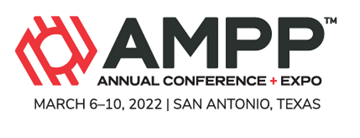Search
Products tagged with 'glycol'
View as
Sort by
Display
per page
04322 Darrell Hartwick, Don Hutchinson, and Mylene Langevin, Buckman Laboratories
Product Number:
51300-04322-SG
ISBN:
04322 2004 cp
Publication Date:
2004
$20.00
06442 POSSIBLE GLYCOL CORROSION IN NOMINALLY DRY GAS PIPELINES
Product Number:
51300-06442-SG
ISBN:
06442 2006 CP
Publication Date:
2006
$20.00
A Study of the Compatibility of Carbon Steel for MEG Reclaiming Systems: Impact of pH Adjustment
Product Number:
51323-19467-SG
Publication Date:
2023
$20.00
Corrosion Of Mild Steel In Concentrated Monoethylene Glycol (MEG)
Product Number:
51321-16701-SG
Publication Date:
2021
$20.00
Corrosion Of Well Tubulars And Casings In Sour Gas Lift Well Annuli - Causes And Mitigations.
Product Number:
51322-17772-SG
Publication Date:
2022
$20.00
Failure Analysis On A Carbon Steel Pulsation Dampener In Glycol Service Using Statistical Fractography Highlights A Stress Corrosion Cracking Contribution
Product Number:
51322-17774-SG
Publication Date:
2022
$20.00
Green Paints...From ‘Paint is a part of the Problem’ to ‘Paint is a Part of the Solution
Product Number:
41215-926-SG
Publication Date:
2015
$20.00







